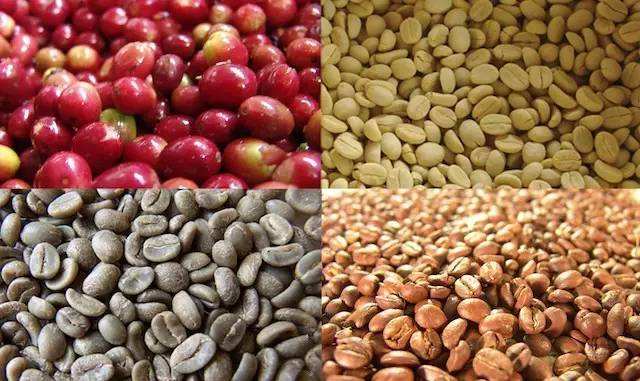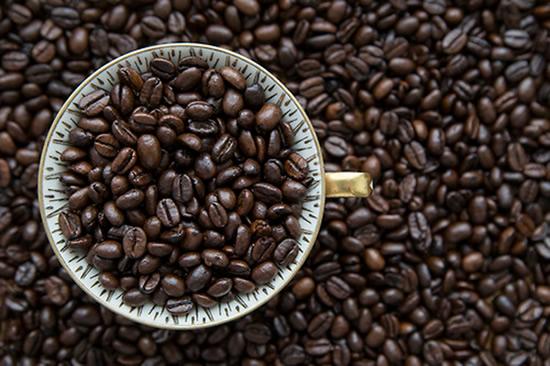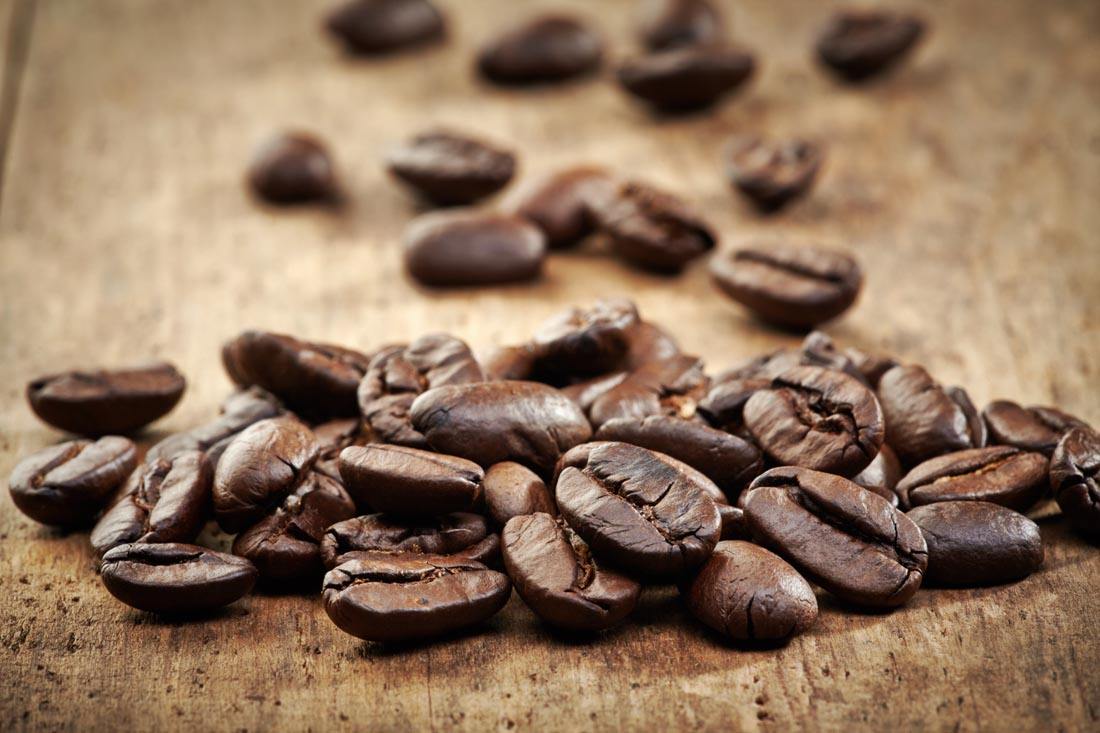Are Blue Mountain Coffee beans bitter? blue Mountain Coffee Flavor description
Follow the caf é (Wechat official account vdailycom) and found that Beautiful Cafe opened a small shop of its own.
It is necessary to take a closer look at the coffee myth of Blue Mountain, because the image of the past is often inconsistent with the reality of today. In 1725, Sir Nicholas Sir Nincholas Lawes brought the first blue mountain coffee trees from Martinique to Jamaica and planted them in St. Andrew) region. Today, St. Andrews is still one of the top three producers of Blue Mountain Coffee, with the other two being Portland and St. Thomas) origin. In eight years, Jamaica exported more than 375 tons of pure coffee. In 1932, coffee production reached its peak and more than 15000 tons of coffee was harvested.

Blue Mountain coffee beans are divided into several kinds according to their quality. the top blue mountain coffee beans generally do not enter the circulation market, and most of them are booked by the royal family and tycoons. The Blue Mountain coffee beans on the market are "Blue Mountain" beans guaranteed by the Jamaican government. Statistics from the Coffee International website show that in 2003-2004, Jamaica produced 43000 bags of coffee, of which 24000 bags were exported. Nearly 90 per cent of exports go to Japan and the rest to Europe and the US. Because the output is limited and the export volume is not large, Blue Mountain coffee has been in short supply in the international market. As the saying goes, blue mountain coffee is expensive even in its place of origin, with a 4-ounce (114-gram) bag of blue mountain coffee selling for nearly $7 on the Jamaican market.
Good blue mountain coffee beans are NO.1 peaberry, also known as pearl beans, which are carefully selected small round beans in the products at an altitude of 2100 meters, the best of the fine products.
Flavor
The nose is very full-bodied, with persistent fruity flavours.
Granule
The particles are fuller.
Baking method
Moderate baking
The caffeine content of Blue Mountain Coffee is very low, which is less than half of that of other coffees, which is in line with the modern concept of health.
However, by 1948, the quality of coffee had declined and Canadian buyers refused to renew their contracts, so the Government of Jamaica established the Coffee Industry Committee to save the fate of top coffee, and by 1969 the situation had improved. because the use of Japanese loans to improve the quality of production, thereby ensuring the market. Even in 1969, Japanese coffee drinkers were willing to insure the coffee. By now, this kind of coffee has reached the point of being feverishly loved.
By 1981, about 1500 hectares of land in Jamaica had been reclaimed for coffee cultivation, followed by investment in another 6000 hectares of coffee land. In fact, today's Blue Mountain area is a small area with a planting area of only 6000 hectares, and it is impossible to grow all the coffee marked "Blue Mountain" there. Another 12000 hectares of land is used to grow two other types of coffee (non-Blue Mountain Coffee): Alpine Top Coffee (High Monuntain Supreme) and Jamaican Premium Coffee (Prime Washed Jamaican).
Blue Mountain Coffee is one of the most advantageous coffee growing conditions in the world. Jamaica's weather, geological structure and topography provide a unique ideal place. The ridge that runs through Jamaica extends to the eastern part of the island, with the Blue Mountains rising to more than 2100 meters. Cool weather, foggy, frequent precipitation, use this rich soil Rain Water to reconcile. Here, a mixed planting method is used to grow coffee trees to accompany banana trees and avocado trees on terraces.
Some small estates also grow Blue Mountain Coffee, such as Wallenford Estarte, Silver Hill Eatate, and J. Martinez) Atlanta Manor (Atlantn Estate), etc. Even the largest landowners in the region are small-scale growers by international standards, many of whom are small landowners whose families have been working on the land for two centuries. The coffee industry in Jamaica faces a series of problems, such as the impact of hurricanes, increased labor costs and difficult mechanization of terraces. It is difficult to rationalize planting on many small estates and farms.
However, Blue Mountain Coffee is a coffee retailer that values credibility and keeps some coffee in stock anyway. The major retailer in the UK said: no matter what the price, he will continue to sell Blue Mountain coffee all year round because he has many customers who only recognize "Blue Mountain".
The output and export volume of Jamaican Blue Mountain Coffee is limited. China does not import Blue Mountain Coffee directly from Jamaica, and the International Coffee Organization has no record of exporting Blue Mountain coffee beans to China. In addition, it is believed that most domestic coffee lovers do not have the ability to distinguish between different quality coffee. So remind people to beware: although you pay a high price, the coffee in your cup is probably not the real Blue Mountain coffee.
Important Notice :
前街咖啡 FrontStreet Coffee has moved to new addredd:
FrontStreet Coffee Address: 315,Donghua East Road,GuangZhou
Tel:020 38364473
- Prev

What are the flavor characteristics of Blue Mountain Coffee beans? introduction to Blue Mountain Coffee
Following Cafe Review (Wechat official account vdailycom) found that Beautiful Cafe opened a small shop of its own, Blue Mountain Coffee is very rich in flavor, with long-lasting fruit flavor. Pure Jamaican Blue Mountain Coffee perfectly combines the unique sour, bitter, sweet, mellow and other flavors of coffee to form a strong and attractive elegant flavor, which is unmatched by other coffee. People who love Blue Mountain Coffee say: it is
- Next

Blue mountain coffee bean variety, blue mountain coffee bean taste
Following caf é (Wechat official account vdailycom) found that Beautiful Cafe opened a small shop with Blue Mountain Coffee beans. There are three varieties of Jamaican coffee: blue Mountain Coffee (Jamaica Blue Mountain Coffee), with Blue Mountain Coffee and Alpine Coffee each divided into four grades. In terms of quality, the order is: NO.1, NO.2, NO.3 and
Related
- Detailed explanation of Jadeite planting Land in Panamanian Jadeite Manor introduction to the grading system of Jadeite competitive bidding, Red bid, Green bid and Rose Summer
- Story of Coffee planting in Brenka region of Costa Rica Stonehenge Manor anaerobic heavy honey treatment of flavor mouth
- What's on the barrel of Blue Mountain Coffee beans?
- Can American coffee also pull flowers? How to use hot American style to pull out a good-looking pattern?
- Can you make a cold extract with coffee beans? What is the right proportion for cold-extracted coffee formula?
- Indonesian PWN Gold Mandrine Coffee Origin Features Flavor How to Chong? Mandolin coffee is American.
- A brief introduction to the flavor characteristics of Brazilian yellow bourbon coffee beans
- What is the effect of different water quality on the flavor of cold-extracted coffee? What kind of water is best for brewing coffee?
- Why do you think of Rose Summer whenever you mention Panamanian coffee?
- Introduction to the characteristics of authentic blue mountain coffee bean producing areas? What is the CIB Coffee Authority in Jamaica?

